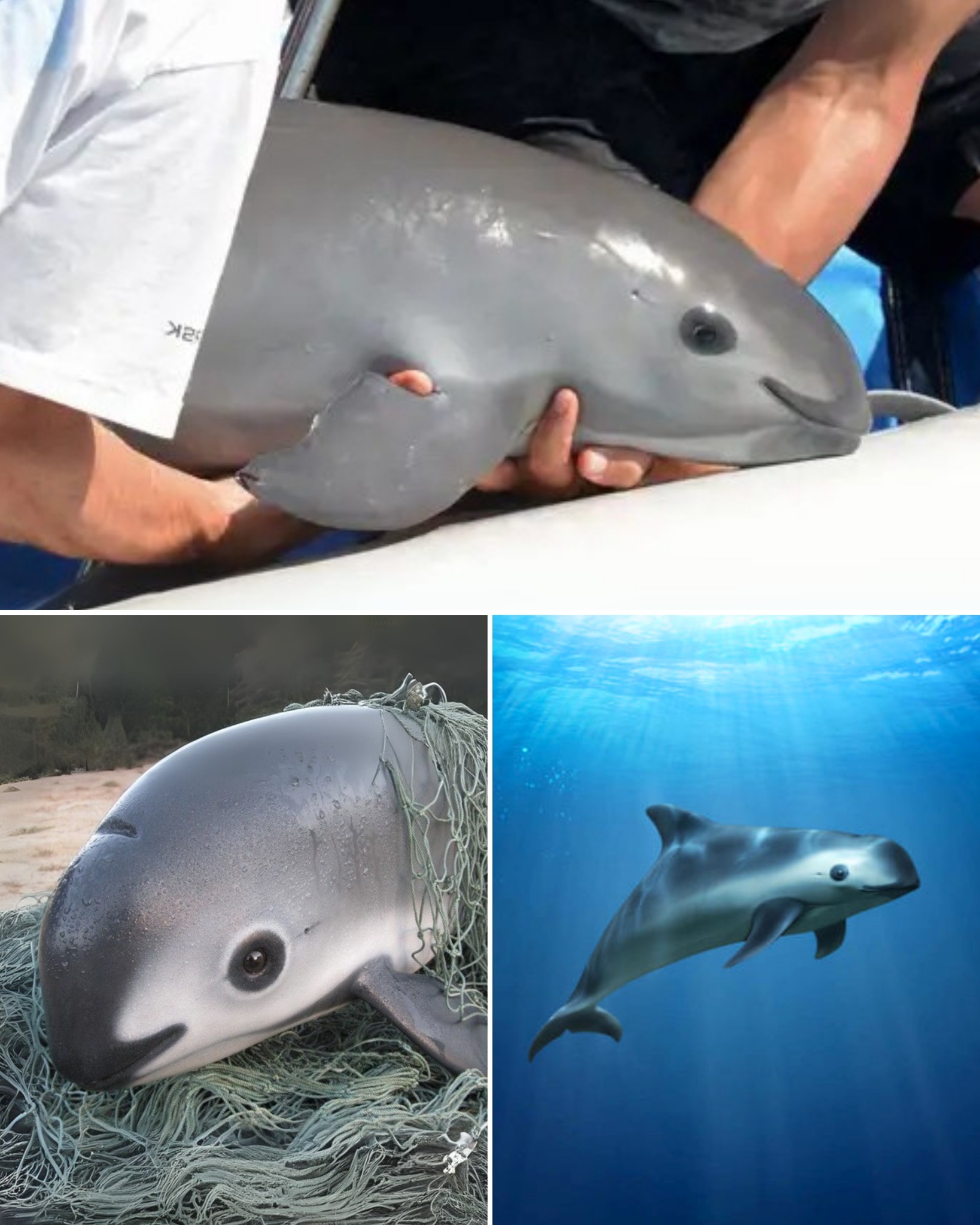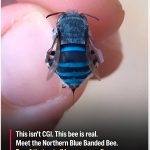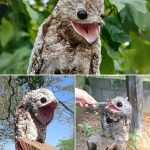The Vaquita: Racing Against Extinction in the Gulf of California

The Vaquita: Racing Against Extinction in the Gulf of California
In the shimmering waters of Mexico’s Gulf of California, a tiny porpoise glides silently through the shadows, its rounded face and dark eye rings giving it an almost cartoon-like appearance. But the vaquita (Phocoena sinus), often called the “panda of the sea” for its distinctive markings, is no whimsical character from a children’s story. It is the world’s most endangered marine mammal, with scientists estimating fewer than 10 individuals remaining in the wild as of 2025. Discovered only in 1958, this elusive creature may vanish from the planet before most people even learn its name, a tragic testament to human impact on fragile ecosystems. The vaquita’s plight is a stark reminder of how interconnected our actions are with the fate of wildlife, and why urgent conservation is essential to prevent its extinction.
The vaquita is a small cetacean, belonging to the porpoise family (Phocoenidae), distinct from dolphins despite superficial similarities. Measuring up to 5 feet in length and weighing around 120 pounds, it is the smallest porpoise species. Its body is compact and stocky, adapted for life in shallow, murky waters. The vaquita’s most striking feature is its facial markings: large dark rings around the eyes and dark patches on the lips that extend to the pectoral fins, creating a line that resembles a smile. The dorsal surface is dark gray, fading to pale gray on the sides and white on the belly, with newborns displaying even darker fringes for camouflage. These markings not only give it a endearing, “cartoon-like” look but also serve as camouflage in the turbid environment of the Gulf.

Behaviorally, vaquitas are shy and elusive, often avoiding boats and human activity. They are typically solitary or found in small groups of 2-3 individuals, using high-frequency echolocation clicks to navigate and hunt in the cloudy waters. Their diet consists mainly of small fish, squid, and crustaceans, which they capture near the seafloor. Vaquitas have a low reproductive rate, with females giving birth to a single calf every two years after an 11-month gestation period. Calves are born in spring, measuring about 2.5 feet long, and stay with their mothers for several months. This slow reproduction exacerbates their vulnerability to threats, as the population cannot rebound quickly from losses.
The vaquita’s habitat is uniquely restricted to the northern Gulf of California, also known as the Sea of Cortez, a biodiversity hotspot teeming with marine life. This semi-enclosed sea, bordered by the Baja California Peninsula and mainland Mexico, features shallow, nutrient-rich waters that support a rich food web. Vaquitas prefer areas less than 50 meters deep, often near river deltas where sediment creates murky conditions ideal for their hunting strategy. The Gulf’s warm temperatures and high productivity make it a nursery for many species, but human activities have transformed it into a danger zone for the vaquita.

The species was first scientifically described in 1958 by American biologists Kenneth S. Norris and William N. McFarland, based on three skulls found in the Gulf. It wasn’t until 1985 that live sightings were confirmed, highlighting how little was known about this cryptic animal. The name “vaquita” means “little cow” in Spanish, a nod to its rounded shape and bovine-like snout. Early research was limited due to the vaquita’s elusive nature, but acoustic monitoring—using underwater microphones to detect their echolocation clicks—has since become a key tool for estimating populations without disturbing them. Initial estimates in the 1990s suggested around 600 individuals, but by the early 2000s, numbers had plummeted due to escalating threats.
The primary threat to the vaquita is bycatch in gillnets, fishing gear designed for other species but deadly to non-target marine life. Gillnets are walls of netting hung vertically in the water, entangling anything that swims into them. In the Gulf, they are used illegally to catch totoaba, a large fish whose swim bladder is highly valued in Chinese traditional medicine, fetching prices up to $100,000 per kilogram on the black market. Despite a permanent gillnet ban in vaquita habitat since 2015 and totoaba fishing prohibitions under CITES (Convention on International Trade in Endangered Species), enforcement is weak. Cartels and poachers continue operations, often at night, leading to vaquitas drowning when entangled—their small size makes escape impossible.
Bycatch rates are catastrophic: a single gillnet can kill multiple vaquitas in one set. Surveys indicate that nearly one in five vaquitas die this way annually, far outpacing their reproductive rate. Other threats include habitat degradation from pollution, reduced freshwater flow from the Colorado River due to dams, and climate change altering water temperatures and prey availability. However, gillnets remain the dominant factor, responsible for a 99% population decline from 1998 to 2018.

Conservation efforts have been intense but challenged. The Mexican government, in partnership with organizations like WWF and the International Committee for the Recovery of the Vaquita (CIRVA), has implemented measures including a gillnet-free zone covering 1,300 square kilometers. Compensation programs pay fishers to switch to alternative gear like trawls or traps, though adoption is slow due to economic pressures. Navy patrols and drone surveillance aim to enforce bans, but corruption and violence from totoaba traffickers hinder progress. WWF has removed over 400 ghost nets (abandoned gillnets) since 2016, preventing further entanglements.
International collaboration is crucial. The U.S. and China have cracked down on totoaba bladder trade, with seizures and arrests disrupting supply chains. Acoustic monitoring surveys, conducted annually, provide data on remaining vaquitas— the 2024 survey detected 6-8 individuals, a decline from 10-13 in 2023. Captive breeding was considered but abandoned due to the species’ sensitivity. Instead, focus is on a “vaquita-safe” fishery, developing gear that avoids bycatch while sustaining local livelihoods.
Fun facts about the vaquita add to its allure. As the smallest cetacean, it’s often compared to a “pocket porpoise.” Females are slightly larger than males, a rare trait in marine mammals. Vaquitas are “acoustic specialists,” producing clicks up to 128-169 kHz for echolocation, higher than most porpoises. They can live up to 20 years in the wild, but few reach that age now. A lesser-known fact: vaquitas are the only porpoise endemic to warm waters, adapting to the Gulf’s subtropical conditions.

Current status as of 2025 is dire. The latest estimates suggest 6-10 vaquitas remain, with no substantial increase despite efforts. CIRVA warns that without zero bycatch, extinction is imminent by 2026. Positive signs include increased sightings outside protected areas, suggesting adaptability, but illegal fishing persists. The future hinges on stronger enforcement, alternative livelihoods for fishers, and global pressure to end totoaba trade.
The vaquita’s story is a cautionary tale of biodiversity loss. As a keystone species, its extinction could disrupt the Gulf’s ecosystem, affecting fisheries and tourism. It underscores the need for sustainable practices and international cooperation. Individuals can help by supporting WWF campaigns, avoiding products linked to illegal trade, and raising awareness. The vaquita may be small, but its survival fight is monumental—a call to protect our oceans before it’s too late.









